🔎 OSINT Case Study: Queen Elizabeth II Coronation (1953)
Taken from Sofia Santos' OSINT Exercise #018
“Sometimes, history is written in the stones we walk on and the roads we travel.”
Hi there 👋 Welcome to another OSINT adventure! Today, we’ll dive into a case steeped in history: unraveling mysteries from Queen Elizabeth II’s coronation in 1953. Using open-source tools and a bit of detective work, we’ll uncover fascinating details about this momentous event. Ready to step into the shoes of an investigator? Let’s go!
Task Briefing
| Key | Value |
|---|---|
| Brief | In May 2023, the world witnessed the coronation of King Charles III at Westminster Abbey in London. Following the ceremony, and similarly to the previous regent, the monarch travelled through the city in a lavish carriage. The route of the 2023 royal procession differed from that of 1953. |
| Objectives | 1. Identify from which exact door Queen Elizabeth II left Westminster Abbey after her coronation. |
| 2. Measure the distance travelled by the Queen’s carriage, following the 1953 coronation. | |
| 3. Estimate the average speed at which the Queen’s carriage travelled. | |
| Original URL | https://gralhix.com/list-of-osint-exercises/osint-exercise-018/ |
| Difficulty Level | For Beginner: medium |
| For Expert: easy |
The Investigation Begins
1. Gathering Context: A Historic Day in London
We begin by setting the stage: June 2, 1953. On this day, Queen Elizabeth II was crowned at Westminster Abbey in a grand ceremony witnessed by millions. The coronation procession was no small affair—it spanned miles and captured the attention of the world.
Our mission is threefold:
- Determine which door the Queen used to exit Westminster Abbey.
- Calculate the distance of her carriage route.
- Estimate the average speed of the royal procession.
With the task clear, we proceed to gather clues.
2. Digging into Visual History
When dealing with events of historical significance, visual documentation is often a treasure trove. Knowing that cameras and video equipment were widely used in the 1950s, it’s logical to assume there’s archival footage of the coronation.
The Search Begins on YouTube
A quick YouTube search using the query "queen elizabeth ii coronation" yields an incredible resource: a full-length historical documentary titled "Rare Colour Footage Of Queen Elizabeth II's Coronation | Our History." With a runtime of 1 hour and 19 minutes, this video promises to be a goldmine of details.

3. Clues from the Documentary
The documentary provides stunning footage of Westminster Abbey during the coronation. Early in the video, we see the Queen entering the Abbey. The architectural details and unique features surrounding the entrance catch my eye.
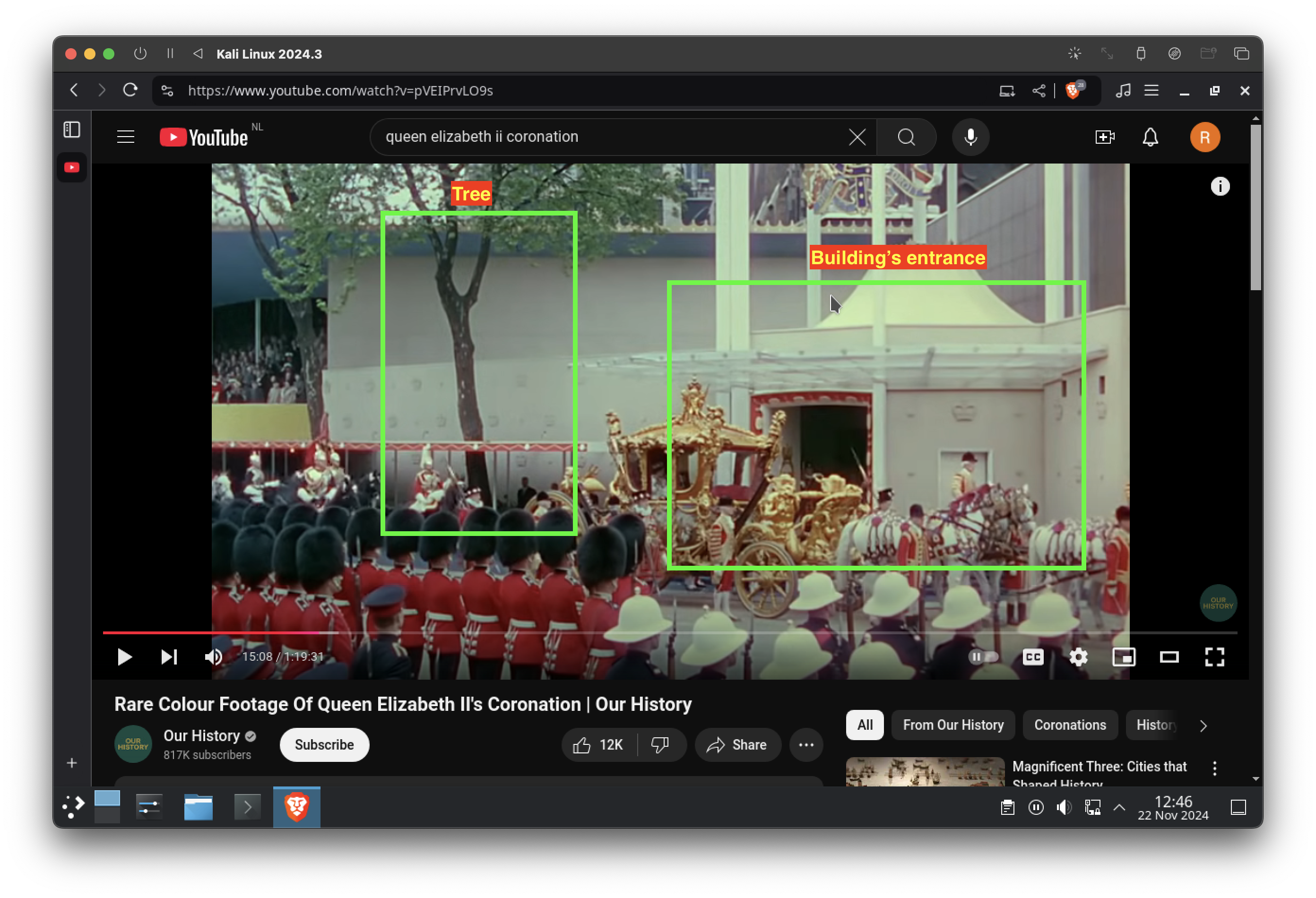
The Lion Statue
In particular, a pair of striking lion statues flanking the entrance stands out. One of these lions, poised upright and wearing a crown, feels like a key piece of the puzzle. Its distinct design suggests it’s not just any generic architectural element but a deliberate and significant symbol.
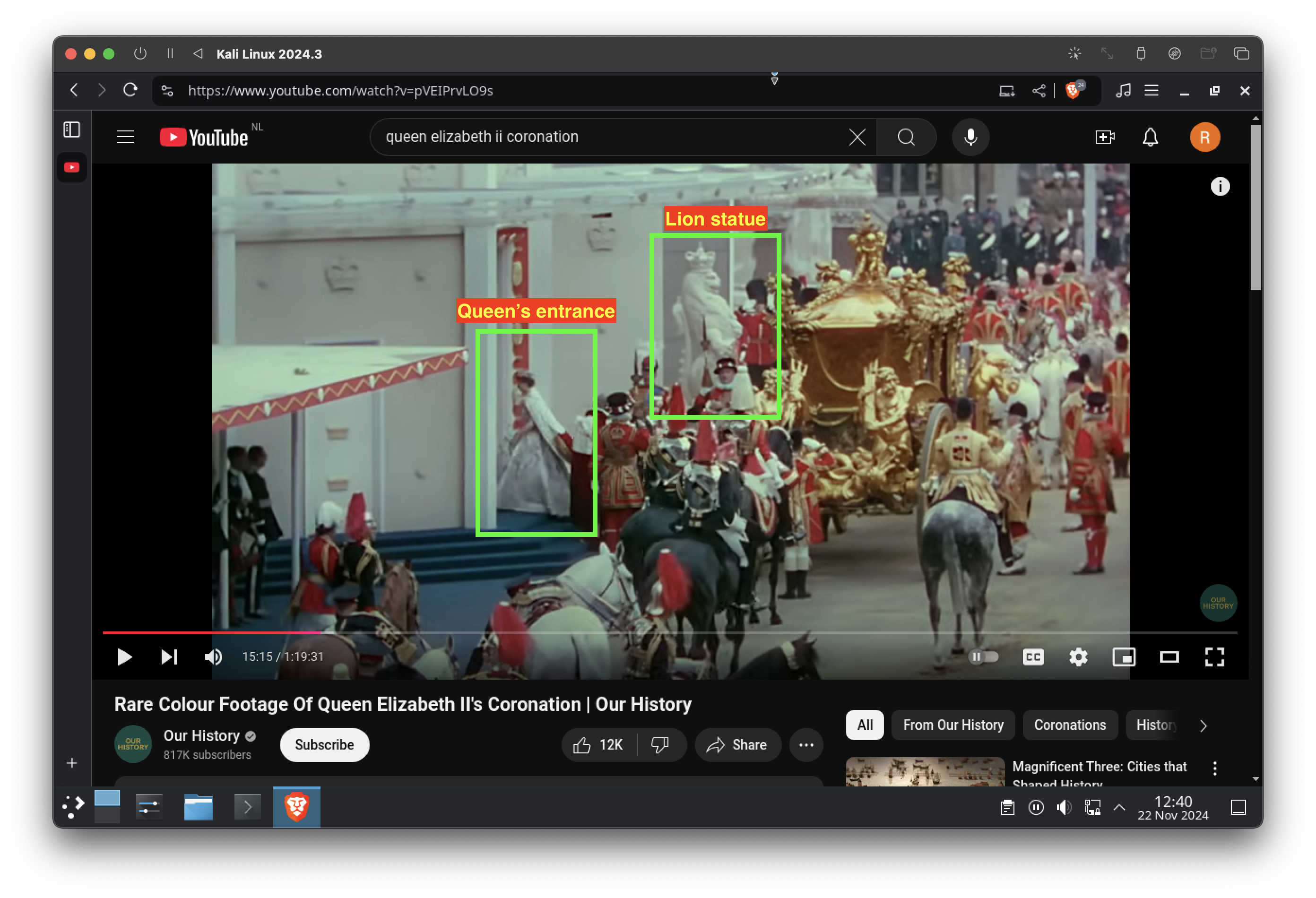
Using the search query "queen elizabeth 2 lion statue," I uncover a vital clue: these statues are part of a collection known as The Queen’s Beasts. Originally unpainted during the coronation, they now reside fully painted at a different location.
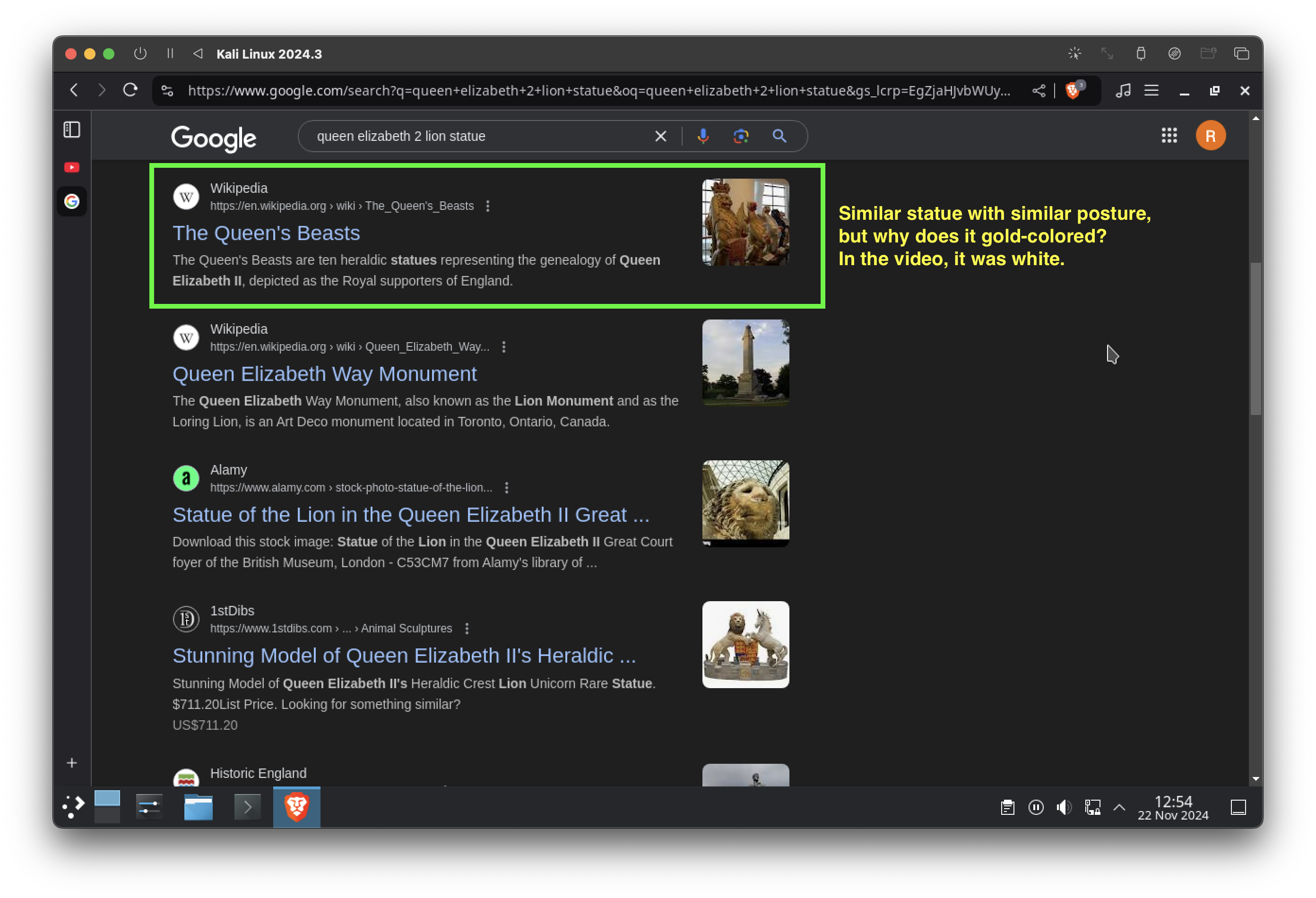
Here's the detail of The Queen's Beasts:
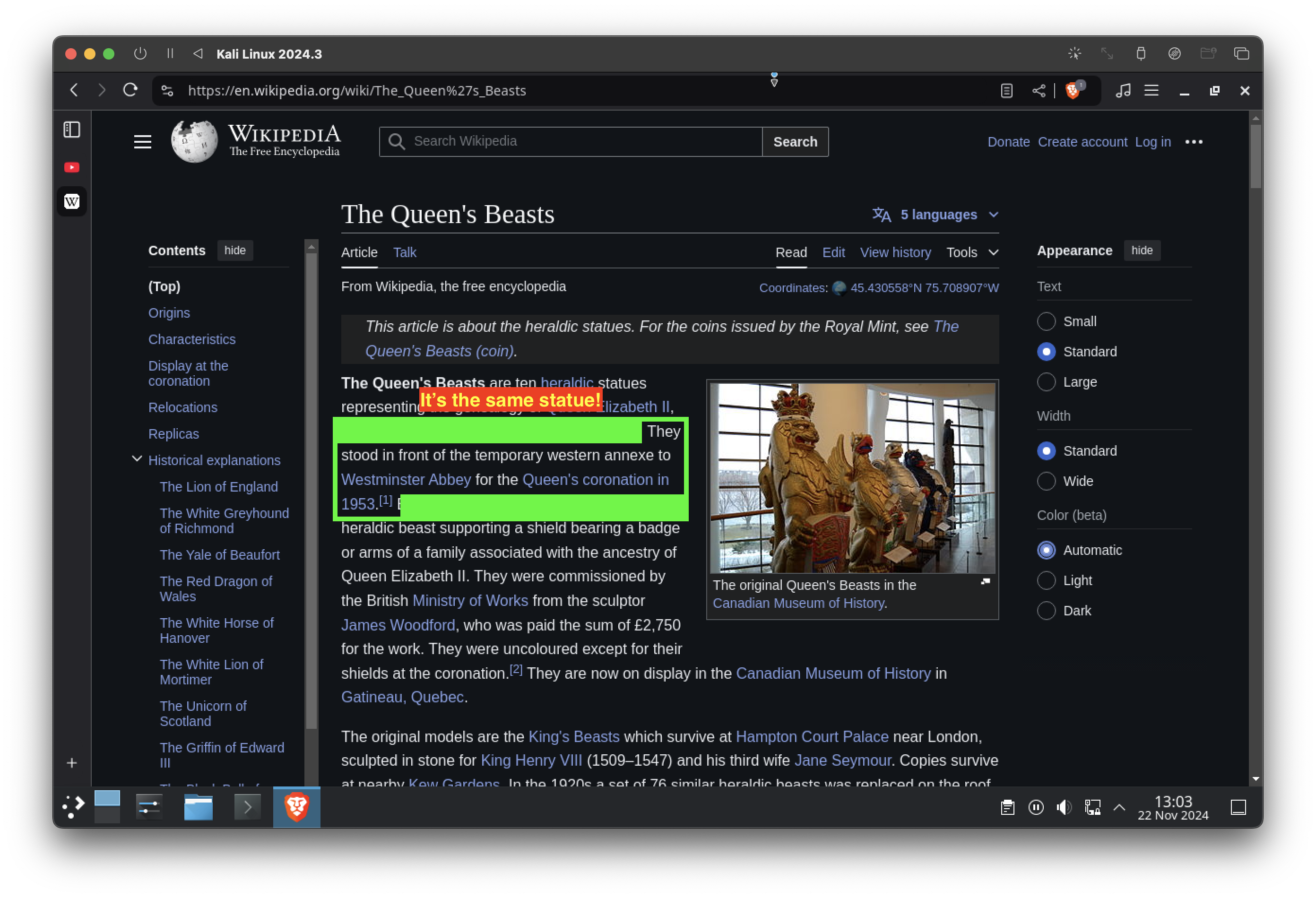
This confirms the western annexe of Westminster Abbey as the Queen’s entrance.
The Queen's Exit
As we progress further into the archival footage, we arrive at the moment where the Queen exits Westminster Abbey. The angle of this segment is different from the footage of her entrance, but it offers us key visual elements to analyze.
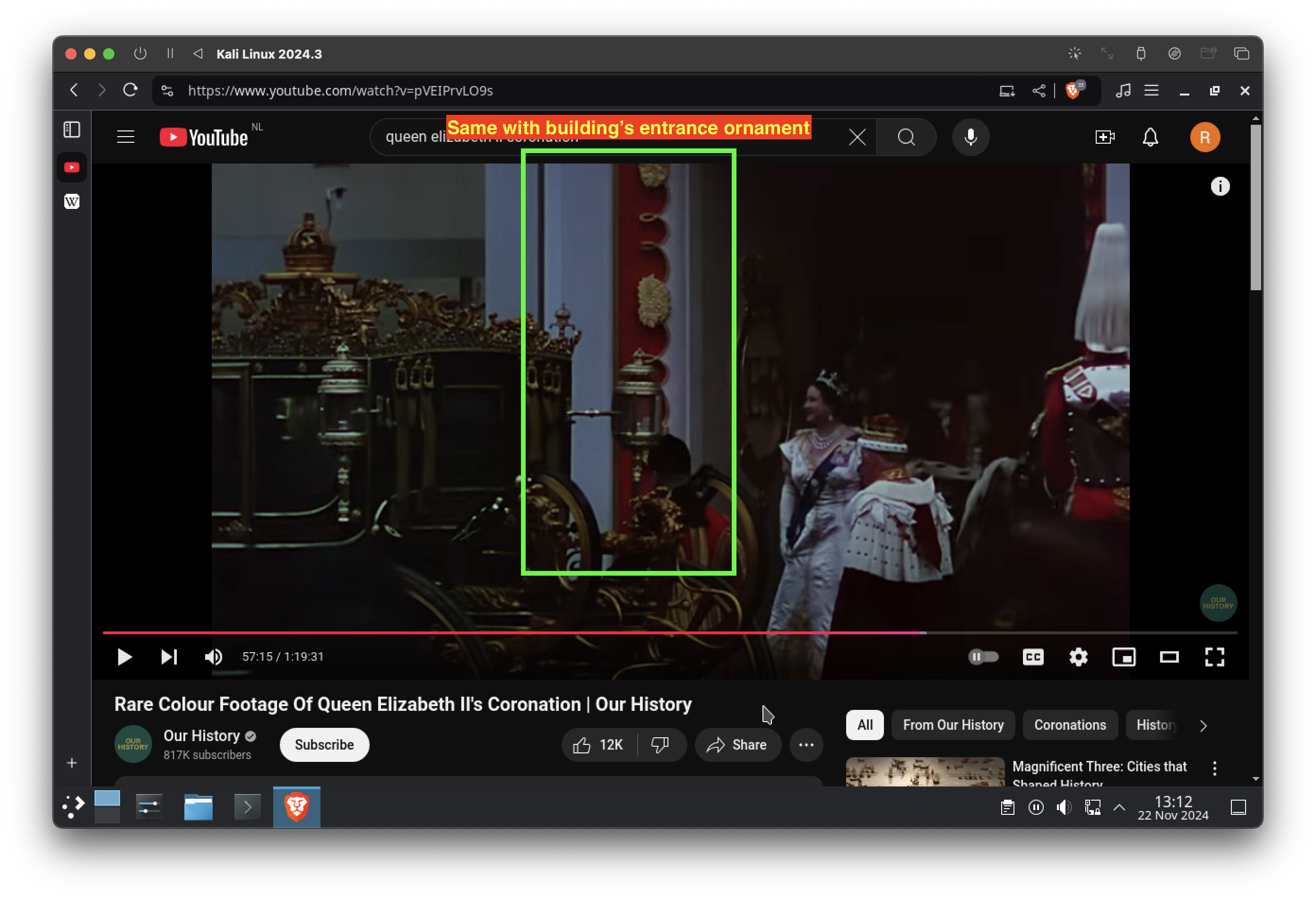
First, the building ornamentation visible in the frame matches exactly with the intricate details observed at the entrance. From the ornate stone carvings (or as some might describe them, architectural embellishments) to the architectural symmetry, these features leave no doubt that the doorway captured in the exit footage is identical to the entrance.
Second, the distance between the carriage and the building remains consistent. This specific spacing is a subtle but critical detail—it confirms that the Queen's carriage did not relocate to a different section of Westminster Abbey for the exit.
By comparing these two observations—the identical ornaments and the unchanged carriage distance—we can confidently conclude that the Queen’s exit was through the same doorway as her entrance: the western annexe of Westminster Abbey.
4. Mapping the Carriage Route
Having identified the exit, the next step is determining the Queen’s carriage route. Historical records provide a detailed map of the 1953 royal procession. A search through public archives leads to a clear depiction of the route, spanning 4.5 miles (7.2 km) from Westminster Abbey to Buckingham Palace.
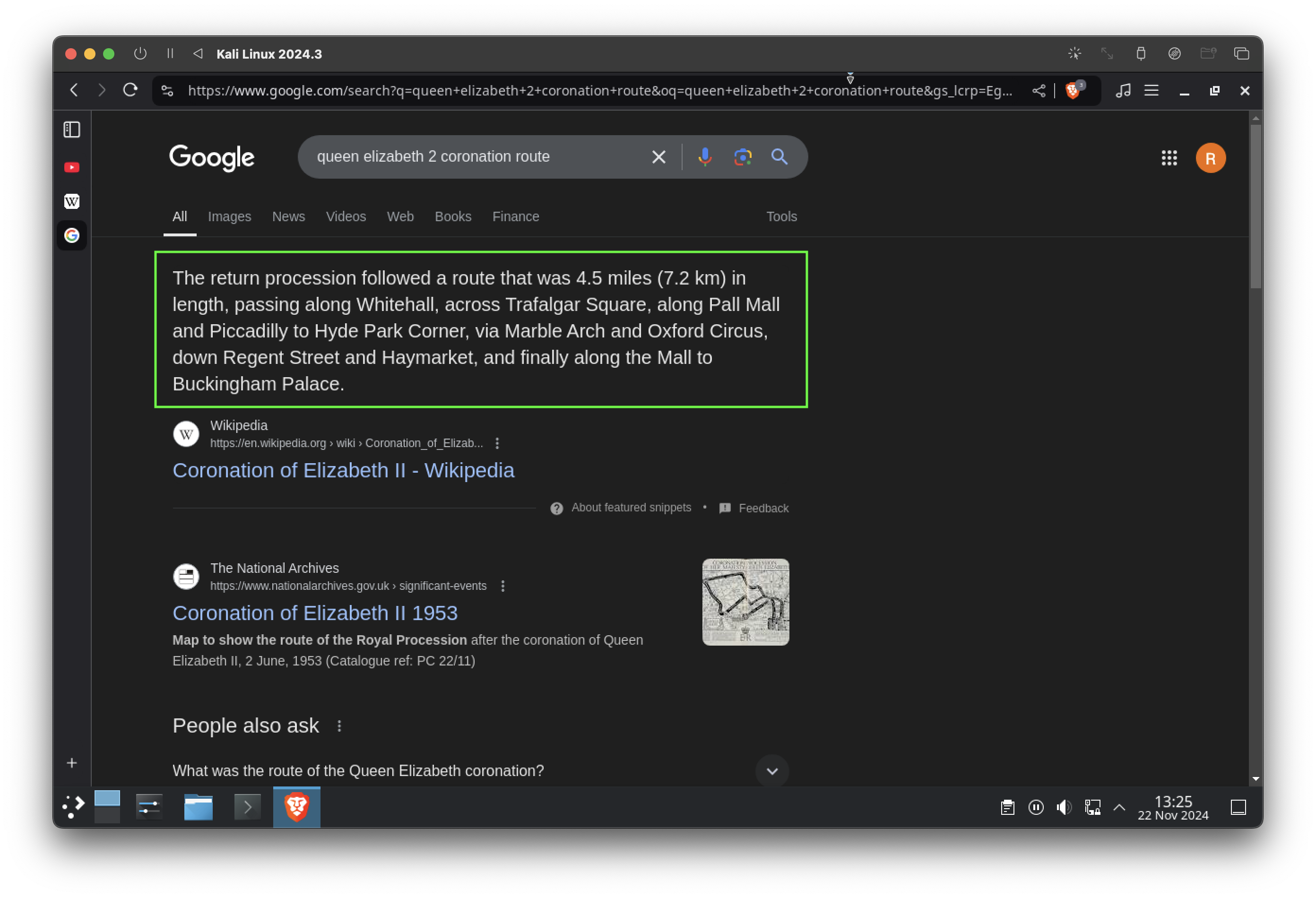
This route, designed to showcase the newly crowned monarch to the public, weaves through London’s most iconic streets.
I stick to this version of distance and decided to not using modern map application like QGIS or Google Earth because the actual route could be different back then (e.g. new buildings added, new roads opened—who knows).
5. Estimating the Average Speed
The final piece of the puzzle is estimating the average speed of the Queen’s carriage. Unfortunately, detailed records of the exact speed do not exist. However, a fascinating find from The National Archives provides a clue.
Take a look at this image:
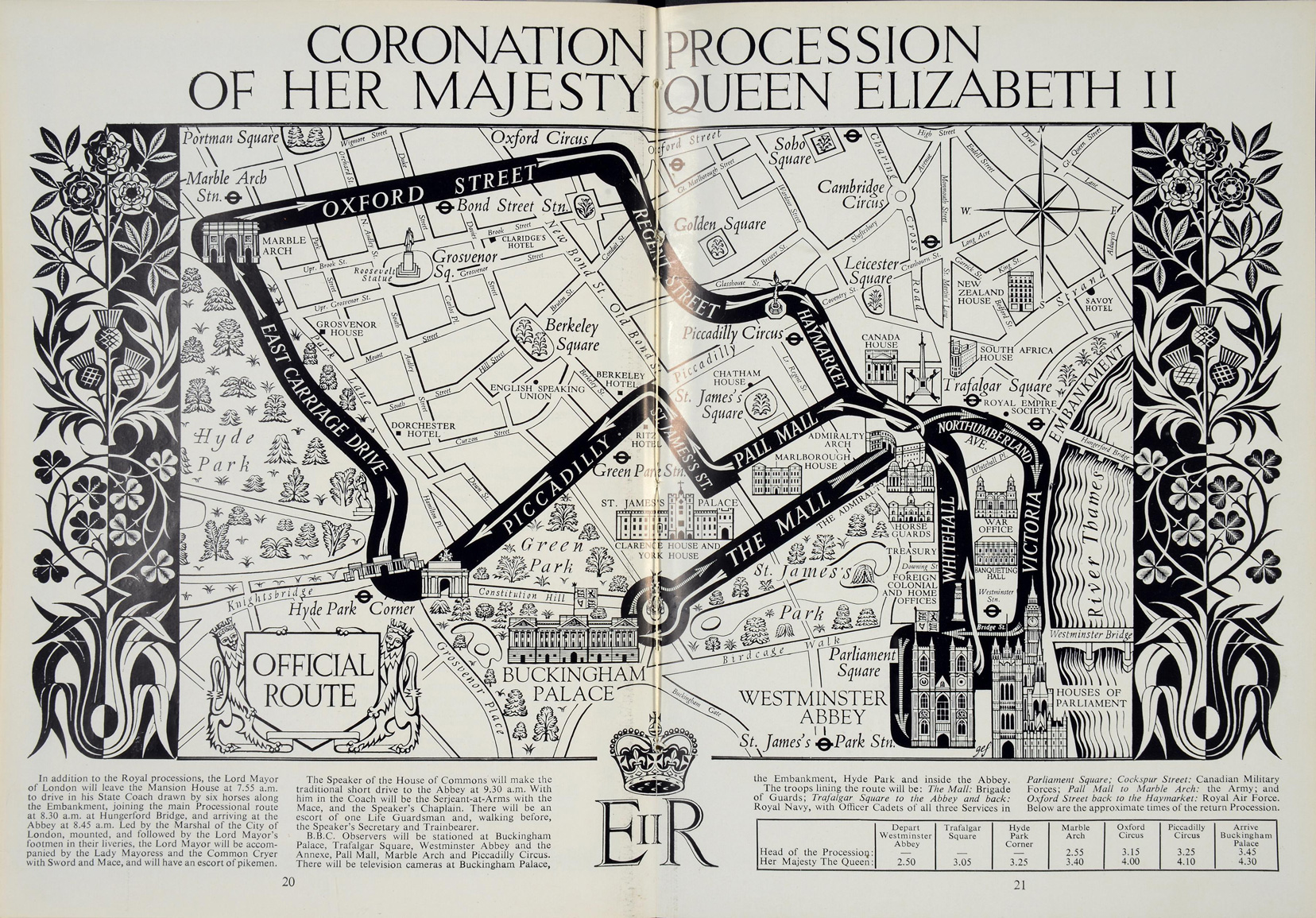
Specifically, this part of the image:

The return procession took approximately 100 minutes, from 2:50PM to 4:30PM local time.
Using the formula for speed:
Speed = Distance ÷ Time
We calculate:
Speed = 7.2 km ÷ (100 minutes ÷ 60 minutes/hour)
Speed ≈ 4.32 km/h (2.69 mph)
This result aligns with the leisurely pace expected of a ceremonial procession.
The Results
| Key | Value |
|---|---|
| Identify from which exact door Queen Elizabeth II left Westminster Abbey after her coronation. | Western annexe to Westminster Abbey |
| Measure the distance travelled by the Queen’s carriage, following the 1953 coronation. | 4.5 miles (7.2 km) |
| Estimate the average speed at which the Queen’s carriage travelled. | 2.69 mph (4.32 km/h) |
Additional Insights
The Role of OSINT in Historical Analysis
This investigation demonstrates how open-source tools can uncover hidden details about historical events. By leveraging videos, archival documents, and geospatial tools, we pieced together a narrative that bridges the past with the present.
Critical Thinking in Action
- Connecting Clues: The lion statue played a pivotal role in identifying the exact door. This reinforces the importance of spotting and verifying unique visual elements during investigations.
- Validating Sources: Cross-referencing footage, historical maps, and official archives ensured the accuracy of our findings.
- Making Logical Assumptions: Recognizing that significant events like the coronation would be well-documented led us directly to valuable visual resources.
What This Means for OSINT Practitioners
While this exercise focused on history, the same principles apply to modern investigations:
- Pattern recognition: Look for recurring themes or elements that stand out.
- Data synthesis: Combine multiple sources to form a cohesive picture.
- Analytical mindset: Question assumptions and explore alternative explanations.
Beyond the Investigation
This exercise isn’t just about solving a puzzle; it’s a celebration of how OSINT can bring history to life. By retracing the Queen’s steps, we connect with a moment that shaped an era. The techniques used here have applications far beyond historical analysis.
Closing Thoughts
Through the lens of OSINT, history becomes an open book. This case study by Sofia Santos’ exercise, showcases the power of open data and analytical thinking to unlock mysteries that might otherwise remain hidden.
If this investigation sparked your curiosity, why not try your hand at another OSINT challenge? Let me know your thoughts, feedback, or suggestions for future cases.
Until next time! 🚀
